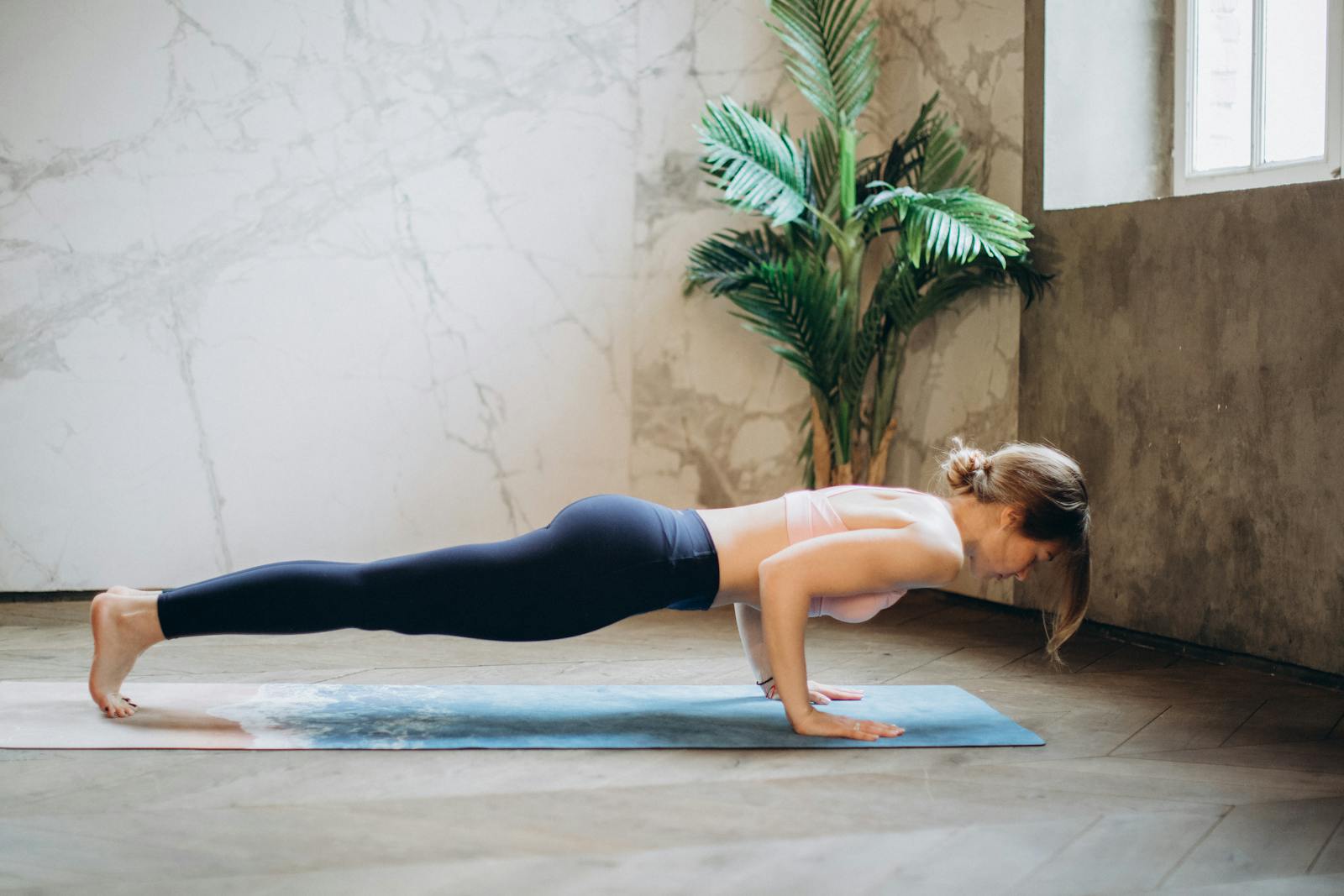Given the increasing prevalence of sedentary lifestyles and the subsequent rise in musculoskeletal issues, the significance of shoulder blade stretches has never been more apparent. These exercises, although seemingly simple, can have a profound impact on our daily functioning, particularly when performed with regularity and precision. But what are the most effective techniques, and how might their regular implementation influence our overall physical wellbeing? With deeper exploration, it becomes evident that this seemingly inconspicuous aspect of our fitness routine may hold the key to peak shoulder health and improved posture.
Understanding Shoulder Blade Anatomy
Delving into the anatomy of the shoulder blade, also known as the scapula, provides essential insight into its role in overall upper body function and mobility. This flat, triangular bone serves as a cornerstone for the complex network of muscles and bones comprising the shoulder region. Its primary function is to provide a stable base from which the arm can perform various movements.
The shoulder blade functions in concert with other skeletal structures such as the humerus and clavicle to facilitate critical movements including rotation, abduction, and adduction of the arm. It achieves this through a series of muscular attachments that allow for intricate coordination. These include the trapezius, rhomboids, and serratus anterior muscles, which connect the scapula to the spine and ribs, and the rotator cuff muscles which link it to the arm.
Importance of Shoulder Mobility
The significance of shoulder mobility cannot be overstated when it comes to overall body function and injury prevention. Shoulder flexibility plays a pivotal role, contributing to the range of motion and the ability to perform daily activities with ease. In the upcoming discussion, we will elucidate the benefits of shoulder mobility and strategies to enhance shoulder flexibility.
Benefits of Shoulder Mobility
While often overlooked, maintaining good shoulder mobility is paramount to overall physical health and performance, offering benefits such as improved posture, reduced risk of injury, and enhanced athletic capacity. Mobility’s impact on posture is undeniable, as flexible shoulder muscles can help align the spine correctly, preventing slumping and promoting a more confident, upright stance. Shoulder health promotion is also directly linked to mobility. When our shoulders are flexible, they can move freely and efficiently, reducing strain on the muscles and joints. This not only lessens the likelihood of injuries such as sprains or dislocations but also enhances the body’s athletic performance. Overall, prioritizing shoulder mobility can considerably contribute to a more active, pain-free lifestyle.
Enhancing Shoulder Flexibility
Embracing shoulder flexibility serves as a cornerstone in the pursuit of superior physical health, supporting the development of robust mobility and mitigating the risk of injury. Enhanced flexibility in the shoulder region promotes rotator cuff health, a critical aspect considering the cuff’s crucial role in facilitating arm movements and stabilizing the shoulder joint. It’s also instrumental in posture improvement, fostering an upright stance and counteracting the detrimental effects of prolonged sitting or poor posture habits. Incorporating shoulder blade stretches into your routine can greatly enhance shoulder flexibility, consequently improving functional range of motion. This not only optimizes everyday tasks and athletic performance but also contributes to overall bodily health. Therefore, prioritizing shoulder flexibility is a strategic, preventative approach to maintain mobility and health.
Identifying Common Shoulder Issues
Familiarizing oneself with common shoulder issues is essential in understanding the importance of shoulder blade stretches. A well-rounded approach to shoulder injury prevention involves recognizing the symptoms of common shoulder conditions, such as rotator cuff injuries, shoulder impingement, and shoulder bursitis. These conditions often result in pain, weakness, and limited flexibility, making it difficult to perform daily tasks.
Rotator cuff injuries, for instance, are usually caused by repetitive overhead movements or heavy lifting. This injury can lead to severe pain and a decreased range of motion. Shoulder impingement, on the other hand, is characterized by the inflammation of the shoulder muscles, causing discomfort during movement. Finally, shoulder bursitis, an inflammation of the small fluid-filled sacs within the shoulder joint, can result in persistent pain and stiffness.
Posture correction methods play a significant role in preventing these issues. Adopting an upright posture helps align the shoulder blades correctly, reducing strain on the surrounding muscles and ligaments. Additionally, regular shoulder blade stretches can strengthen the shoulder muscles, enhance flexibility, and improve joint function, all of which are essential for maintaining a healthy shoulder. Understanding these common issues is the first step towards effective prevention and treatment.
Basic Shoulder Blade Stretch Techniques
To effectively manage shoulder ailments through stretching, one must first comprehend the structure of the shoulder blade. In this section, we will focus on understanding the fundamental anatomy of this critical body part. Following this, we will explore some basic yet powerful shoulder blade stretch techniques, designed to alleviate discomfort and enhance mobility.
Understanding Shoulder Anatomy
Understanding the complex anatomy of the shoulder, particularly the shoulder blade, is essential for performing effective and efficient stretching techniques. The shoulder joint structure is intricate and consists of several key components:
- Humerus: The upper arm bone that fits into the socket of the shoulder blade.
- Scapula: Also known as the shoulder blade, it provides a base for the muscles of the shoulder and arm.
- Clavicle: Commonly referred to as the collarbone, it connects the shoulder blade to the rib cage.
- Rotator Cuff: A group of muscles and tendons that secure the humerus in the shoulder socket and enable arm rotation.
Understanding the rotator cuff function and the structure of these components is vital for devising effective shoulder blade stretches.
Implementing Stretch Techniques
Having grasped the anatomy of the shoulder, we can now proceed to explore basic techniques for stretching the shoulder blade effectively. The stretching frequency is crucial for achieving the desired results, typically, a consistent routine of 3 to 5 days a week is recommended. The use of appropriate stretching equipment can also enhance the effectiveness of these exercises. Tools like resistance bands, yoga blocks, and foam rollers can be incorporated to increase the range of the stretch and target specific muscle groups more efficiently. The key to successful shoulder blade stretches is to maintain the correct form, control the speed, and prioritize quality over quantity. Remember, the goal is to increase flexibility and strength, not to cause unnecessary strain or injury.

Advanced Shoulder Blade Stretches
While basic exercises can provide foundational strength, it is the incorporation of advanced shoulder blade stretches into your routine that will truly enhance your muscular flexibility and mobility. These advanced stretches not only increase range of motion but also strengthen the muscles around the shoulder blades, reducing the likelihood of injury and aiding in Pain Management Techniques.
Incorporating advanced stretching requires careful attention to form and may benefit from Stretching Equipment Utilization. The following are four advanced shoulder blade stretches:
- Doorway Stretch: Stand in a doorway, grip the sides with each hand at shoulder height and gently lean forward, stretching the chest and shoulder muscles.
- Eagle Pose: A yoga pose that involves intertwining your arms, which helps to stretch the rhomboids and trapezius muscles.
- Cross-body shoulder stretch: Pull one arm across the body and use the other to apply pressure, stretching the back of the shoulder.
- Neck Release: Tilt the head towards one shoulder while gently pulling the head further with your hand, stretching the muscles running along the side of the neck and into the shoulder.
Incorporating Stretches Into Your Routine
To maximize the benefits of shoulder blade stretches, it is essential to thoughtfully incorporate them into your regular exercise routine. The key factors to take into account when embedding these stretches are stretching frequency and stretch duration.
Stretching frequency refers to how often you perform the stretches. Ideally, you should aim to stretch your shoulder blades daily to maintain flexibility and range of motion. However, the frequency can vary depending on your physical condition and fitness goals.
Stretch duration, on the other hand, refers to the length of time you hold each stretch. An effective stretch should be held for about 30 seconds to allow the muscles to fully relax and lengthen. Repeating each stretch two to three times can enhance its effectiveness.
However, it is important not to rush these stretches. Quality should always be prioritized over quantity to avoid injury and ensure excellent results. Furthermore, consistency is key. Make these stretches a part of your daily routine to gradually increase your shoulder mobility and decrease discomfort.
Always remember, it’s better to start with shorter, more frequent stretches and gradually increase the duration as your flexibility improves. By carefully taking into consideration stretching frequency and duration, you can successfully integrate shoulder blade stretches into your exercise regimen.
Shoulder Stretches for Office Workers
Office workers often experience shoulder strain due to prolonged periods of sitting and computer use. It is essential to understand the impact of desk jobs on shoulder health and the value of incorporating effective shoulder stretching techniques into daily routines. These stretches can alleviate discomfort, improve flexibility, and contribute to overall shoulder health.
Desk Job Shoulder Strains
Prolonged periods of sitting and maintaining poor posture at a desk can place significant strain on an individual’s shoulder blades, necessitating the implementation of targeted stretches to alleviate discomfort and promote flexibility. The importance of correct posture cannot be emphasized enough, as it plays a vital role in reducing muscular tension and preventing imbalances.
An ergonomic workstation setup is also essential in mitigating the risk of developing shoulder strains. Here are four key components to take into account:
- Chair Adjustment: Make sure your chair supports your lower back, and your feet are flat on the floor.
- Desk Height: Your elbows should be at a 90-degree angle when typing.
- Monitor Placement: Position your monitor at eye level to avoid neck and shoulder strain.
- Regular Movement: Stand, stretch or walk every 30 minutes to prevent stiffness.
Adhering to these guidelines can greatly reduce the strain on your shoulder blades and enhance overall well-being.
Effective Shoulder Stretching Techniques
While implementing an ideal workspace is a significant step towards alleviating desk-induced shoulder strains, an effective routine of shoulder stretches can further enhance your muscular health and flexibility. Incorporating shoulder strengthening exercises into your daily routine can help to prevent muscular imbalances that might lead to chronic pain or injury.
A versatile piece of stretching equipment to contemplate is a resistance band, useful for an array of shoulder exercises like band pull aparts, dislocates, and overhead presses. Engaging in frequent, targeted stretching can help promote better posture, relieve tension, and increase mobility, particularly for those spending long hours in a stationary position. Remember, consistent and correct execution of these techniques is crucial for obtaining optimal results and maintaining the health of your shoulder muscles.
Stretches for Athletes and Gym-goers
A significant number of athletes and gym enthusiasts can greatly benefit from incorporating shoulder blade stretches into their regular workout routine. These stretches can help to improve flexibility, enhance athletic performance, and decrease the risk of shoulder injuries. To maximize these benefits, careful consideration should be given to both the choice of stretching equipment and the frequency of the stretching exercises.
- Stretching Equipment Choices: Select equipment that allows for a full range of motion and provides adequate resistance. This could include resistance bands, foam rollers, or even a simple yoga mat for floor-based stretches.
- Stretching Frequency Recommendations: Aim to incorporate shoulder blade stretches into your routine at least three times per week. For those with tight or overused shoulders, daily stretching might be beneficial.
- Proper Technique: Make sure to maintain proper form throughout the stretch to avoid injury and maximize effectiveness. This includes keeping the spine straight and avoiding any rapid or jerking movements.
- Variation of Stretches: Include a variety of shoulder blade stretches to target different muscles. This could range from cross-body shoulder stretches, door frame stretches, to overhead tricep stretches.
Shoulder Stretches for the Elderly
Despite the common misconception, maintaining shoulder flexibility is not just important for athletes but is equally vital for the elderly population. As we age, our bodies naturally lose flexibility and strength, which can lead to hunched shoulders, a common issue of elderly posture correction. This can result in discomfort, reduced mobility, and an increased risk of injury.
Sustaining shoulder health in the elderly, hence, is essential. Regular shoulder stretches can help immensely. They work to improve range of motion, decrease stiffness, and strengthen the muscles around the shoulder blades. In turn, this can aid in maintaining a more upright posture and provide a sense of overall wellbeing.
Some effective stretches for the elderly include gentle wall push-ups, chair yoga poses such as the ‘eagle arms’, and the ‘pendulum’ exercise using light weights. These exercises are generally safe and can be performed even at home with minimal equipment. However, each individual’s physical condition varies, and it’s recommended to consult with a healthcare provider before starting any new exercise regimen.
Precautions and Contraindications
In the pursuit of shoulder health, it is crucial to understand and adhere to certain precautions, while also being mindful of potential contraindications to these stretches. These considerations are key in minimizing stretching risks and maximizing the benefits of your exercise regime.
- Stretching risks: It’s important to warm up before stretching. Stretching cold muscles can lead to injuries. If you feel sharp or intense pain during a stretch, stop immediately. This could indicate a muscle strain or sprain.
- Individual tolerance: Not everyone’s body reacts to stretching in the same way. Understand your body’s unique responses to exercise and stretching. Don’t push beyond your limits.
- Medical conditions: If you have a pre-existing medical condition, especially one that affects your bones, joints, or muscles, consult with your healthcare provider before starting any new exercise or stretching routine.
- Proper technique: Incorrect stretching can do more harm than good. Make sure you’re performing each stretch correctly. If you’re unsure, seek advice from a certified personal trainer or physical therapist.
Measuring Your Progress
After diligently following the necessary precautions and guidelines for shoulder blade stretches, it’s equally important to gauge the progress of your efforts in order to assess the effectiveness of your exercise regime. This process, known as progress tracking, is crucial to guarantee that you’re making strides towards your health and fitness goals.
Progress tracking involves monitoring changes in your flexibility, strength, and overall comfort during and after your stretching sessions. A key component of this is recording the stretching duration, or the length of time you spend on each stretch. This information, when logged consistently, provides valuable insight into how your body is responding to the exercises.
If you’re experiencing a steady increase in flexibility and a decrease in discomfort, this indicates that your shoulder blade stretches are yielding positive results. However, if you find no improvement or even regression in your flexibility, this could be a sign that the stretches aren’t working as intended or that they’re being executed incorrectly.
Moreover, consider seeking professional advice if your progress is stagnant or if you’re experiencing persistent discomfort despite regular stretching. A professional can help fine-tune your routine, making sure that you’re performing the exercises correctly and effectively. Remember, the ultimate goal is to improve your shoulder health and functionality.
Frequently Asked Questions
What Are the Most Common Causes of Shoulder Blade Pain?
The most common causes of shoulder blade pain often stem from underlying diseases impacting the musculoskeletal system, such as arthritis. Additionally, the impact of stress can cause tension and tightness, leading to shoulder discomfort.
Do Shoulder Blade Stretches Help With Postural Issues?
Yes, performing shoulder blade stretches regularly can greatly improve postural issues. It aids in enhancing office ergonomics by reducing tension and promoting flexibility, thereby enhancing posture and preventing musculoskeletal problems. Stretching frequency plays an important role in this process.
Can Shoulder Blade Stretches Improve My Sports Performance?
Yes, enhancing shoulder flexibility through targeted exercises can greatly improve sports performance. Stretches impact on performance by increasing range of motion, reducing injury risk, and improving muscle function, all essential for excellent athletic execution.
What Kinds of Foods Can Support My Shoulder Health and Mobility?
Foods rich in Omega-3, antioxidants, and vitamins can positively impact joint health. Consuming anti-inflammatory foods such as fatty fish, berries, and green leafy vegetables can enhance shoulder health, mobility, and potentially improve overall sports performance.
Are There Any Specific Shoulder Blade Stretches for Pregnant Women?
Yes, there are specific shoulder blade stretches suitable for pregnant women, considering prenatal exercise safety. These include gentle neck rolls, shoulder rolls, and wall stretches. Using maternity support belts can further enhance comfort and safety during these exercises.


